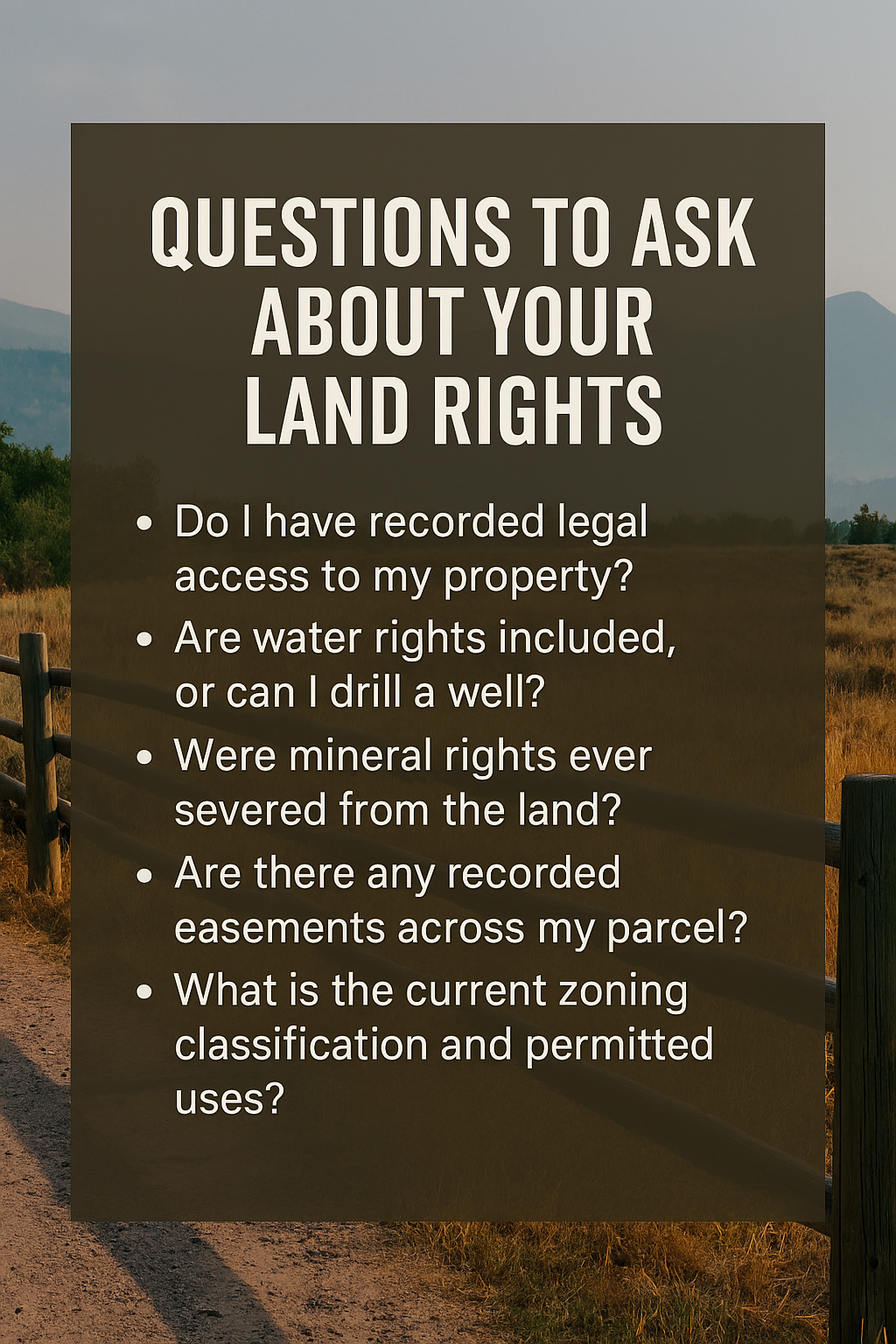Are Vacant Lands Owned by the Government?
Disclaimer: The information provided in this article is for general informational purposes only and should not be taken as legal, financial, or professional advice. Land ownership laws, zoning rules, and regulations can vary by county and property. Always verify ownership and rights through official county records and consult with qualified professionals—such as attorneys, surveyors, or title companies—before making land purchase or investment decisions.
Understanding Vacant Land Ownership
It’s a common question: if land looks empty or unused, does that mean the government owns it? The answer is no—vacant land can be owned by private individuals, companies, state governments, or the federal government.Ownership depends on history, records, and how the land has been managed or transferred over time.
Types of Vacant Land Ownership
1. Private Ownership
Much of the vacant land in Utah is privately owned. These parcels may look unused, but they still belong to individuals, families, or investors. Owners may hold them for future development, recreation, or long-term investment.
2. State Trust Lands
Utah has millions of acres of land managed by the Utah School and Institutional Trust Lands Administration (SITLA). These lands are held for the benefit of public schools and other institutions. Some are leased for grazing, mining, or recreation, and a portion is sold at public auctions.
3. Federal Public Lands
Agencies like the Bureau of Land Management (BLM) and U.S. Forest Service manage large tracts of land in Utah. These lands are not privately owned but are managed for public use, resource protection, and multiple activities like grazing, mining, and recreation. They are not “free land”—use is regulated and ownership remains federal.
4. County or City-Owned Land
Some vacant lots are owned by counties or municipalities. These may include tax-delinquent properties, surplus lots, or land designated for public projects. Occasionally, counties auction these parcels to the public.
How to Tell Who Owns Vacant Land
Ownership is always a matter of record. If you’re unsure whether a parcel is private or government-owned:
Check the county assessor’s database for parcel records.
Contact the county recorder for deeds and ownership history.
Review SITLA maps for Utah state trust lands.
Use the BLM land status maps for federal land boundaries.
FAQs: Vacant Land and Government Ownership
Is all vacant land public land?
No. Vacant land can be privately owned. Many Utah parcels that appear unused are owned by families or investors.
Can I buy federal BLM land?
Not directly. Federal land is not for sale except through rare congressional action or specific disposal programs.
Can I buy state trust land in Utah?
Yes, sometimes. SITLA auctions selected parcels each year, often for residential, agricultural, or commercial use.
What about tax-delinquent land?
Counties may seize and auction land if taxes remain unpaid, but strict rules apply.
How do I avoid trespassing on vacant land?
Always verify ownership. Even if a parcel looks abandoned, it may belong to a private owner or agency.
Final Thoughts
Vacant land in Utah isn’t automatically owned by the government. Ownership can be private, state, federal, or county. The key is to check official records to see who holds the title.
👉 At Mountains West Ranches, we specialize in helping buyers find and purchase private vacant land in Utah with clear ownership and simple financing.


